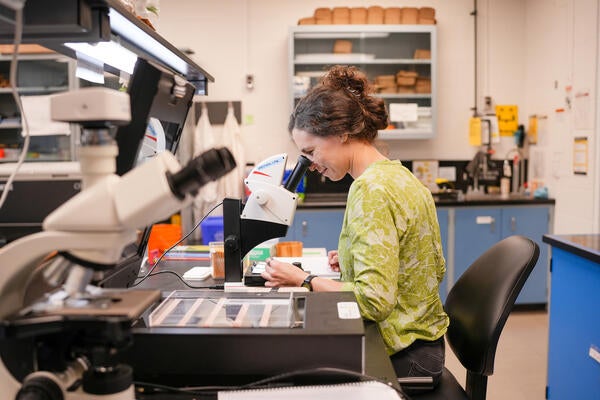
Researchers develop new method to reduce HIV transmission
Researchers at the University of Waterloo are developing a new method to decrease the likelihood of contracting HIV.

Researchers at the University of Waterloo are developing a new method to decrease the likelihood of contracting HIV.
By Media RelationsResearchers at the University of Waterloo are developing a new method to decrease the likelihood of contracting HIV.
Professor Emmanuel Ho of the School of Pharmacy has developed a gel that contains nanoparticles that can be applied directly to the vaginal tract, where HIV is contracted in women.
“Applying medication directly where infection occurs has many advantages,” said Professor Ho. “By targeting the site of transmission directly, we ensure that less medication is lost in transit, and we minimize the likelihood of systemic and off-target side-effects.”
In women, HIV transmission occurs in the vaginal tract. Existing drugs that slow or stop HIV’s spread are administered orally or by injection. Because they do not target the exact area where the virus enters the body, the drugs must travel through the body to reach the vaginal tract, and often they can have side-effects such as flu-like symptoms, rashes or gastro-intestinal upset.
Topical formulas like gels and creams are also easier to administer than alternatives such as injectables, making the patient more likely to use the medication.
A new study from the Ho lab published in Science Advances, a top-tier science journal, examines the effectiveness of the lab’s nanoparticle gel. The gel is designed to target a specific receptor in the vaginal tract called a4b7. a4b7 has been shown to increase susceptibility to HIV infection as HIV can bind to that receptor to infect a person. Thus, the team designed a nanoparticle medication to target and block those specific receptors.
“Within just one hour, our nanoparticle gel was able to block >75% of a4b7 receptors on immune cells within vaginal tissue cultured by our team,” said Ho. “This is a promising result as it indicates both rapid and efficient blocking. We intend to further optimize dosing and to assess how long our formulation lasts in the vaginal tract – whether it stays effective for weeks or months.”
By successfully blocking the a4b7 receptors using the nanoparticle gel, HIV has fewer locations to bind to upon entering the vaginal tract. Having fewer sites to bind will likely decrease the rate of transmission that occurs. Going forward, the Ho lab plans to simulate HIV infections, assess whether blocking the receptors does in fact decrease infection rates, and optimize drug dosing.
The research was completed in partnership with Dr. Elena Martinelli at Population Council and researchers from Tulane University and Rockefeller University. It is the first published study on a vaginal nanoparticle gel for this particular purpose and was recently published in Science Advances.

Read more
Waterloo researcher examines how some plant species are adjusting to change and others are losing out

Read more
The Royal Society of Canada welcomes Drs. Ihab Ilyas and Laura Hug as part of the latest cohort of fellows and RSC College members

Read more
Decades of work leads to prestigious award win for the Canada Research Chair and chemistry professor
The University of Waterloo acknowledges that much of our work takes place on the traditional territory of the Neutral, Anishinaabeg, and Haudenosaunee peoples. Our main campus is situated on the Haldimand Tract, the land granted to the Six Nations that includes six miles on each side of the Grand River. Our active work toward reconciliation takes place across our campuses through research, learning, teaching, and community building, and is co-ordinated within the Office of Indigenous Relations.